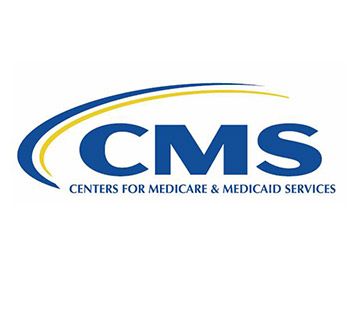Administration’s Proposed Rule on Marketplace Stabilization
The Centers for Medicare & Medicaid Services (CMS) has released the “Marketplace Stabilization Proposed Rule” (Proposed Rule). Overall, the rule proposes a series of modifications to the Marketplaces that align with requests made by issuers in an attempt to keep them in the Marketplaces. The background section of the Proposed Rule emphasizes the concerns of issuers and the Agency’s interest in making sure that consumers have more plan options for 2018. Comments are due March 7.
While ambulance services are not directly mentioned, the Proposed Rule could affect the ability of individuals in the marketplace to enroll and remain enrolled in plans. Another provision that could impact the ambulance industry is the proposal to rely more upon the States to enforce the network adequacy requirements of the ACA.
Changes to Open Enrollment/Special Enrollment Periods
CMS proposes to tighten the enrollment rules in several ways. First, the Proposed Rule would change the open enrollment period to November 1 – December 15 to “increase the incentives for individuals to maintain enrollment in health coverage and decrease the incentives for individuals to enroll only after they discover they require services.”[1] Individuals may still be eligible for a special enrollment period that would allow them to enroll outside of these dates.
CMS would increase the States’ pre-enrollment verification from 50 percent to 100 percent beginning June 1, 2017, and require consumers’ enrollment requests to be “pended” until verification is complete. CMS encourages State-based Exchanges to adopt a similar policy. The Proposed Rule would also limit the ability of existing Exchange enrollees to change plan metal levels during the coverage year. It would allow Exchanges to require enrollees that qualify for a special enrollment period because of a dependent to be add only to the current Qualified Health Plan (QHP) or allow the enrollee and the new dependent to enroll in another QHP within the same level of coverage.[2]
The Proposed Rule would also require that if an enrollee or the dependent is not enrolled in a silver level QHP and becomes newly eligible for cost-sharing reductions and qualifies for the special enrollment periods, the Exchange may allow the enrollee and dependent to enroll in only a QHP at the silver level.[3] CMS also proposes a new restriction that would allow the Exchange only to allow an enrollee and dependents who qualify for remaining special enrollment periods to make changes to their enrollment in the same QHP or to change to another QHP within the same level of coverage, if other QHPs at that metal level are available.[4]
CMS would allow consumers to start their coverage one month later than their effective date would ordinarily have been, if the special enrollment period verification process results in a delay in their enrollment such that they would be required to pay two or more months of retroactive premium to effectuate coverage or avoid termination for non- payment. [5]
Additionally, CMS would permit the issuer to reject an enrollment for which the issuer has a record of termination due to non-payment of premiums unless the individual fulfills obligations for premiums due for previous coverage.
The Proposed Rule also expresses concern that some consumers not seeking coverage until they are married. CMS proposes that if consumers are newly enrolling in QHP coverage through the Exchange through the special enrollment period for marriage, at least one spouse must demonstrate having had minimum essential coverage for 1 or more days during the 60 days preceding the date of marriage. There is a special rule for individuals who may not have been living in the United States prior to their marriage.[6]
The Proposed Rule would also significantly limit the use of the exceptional circumstances special enrollment period. In previous years, this special enrollment period has been used to address eligibility or enrollment issues that affect large cohorts of individuals where they had made reasonable efforts to enroll, but were hindered by outside events. If the proposal were adopted, CMS would apply a more rigorous test for future uses of the exceptional circumstances special enrollment period, including requiring supporting documentation where practicable. It would grant this special enrollment period only if provided with sufficient evidence to conclude that the consumer’s situation was truly exceptional and in instances where it is verifiable that consumers were directly impacted by the circumstance, as practicable.[7]
CMS is also exploring ways to incentivize consumers to maintain continuous coverage.
These proposed special enrollment changes would not apply to special enrollment periods under the Small Business Health Options Program (SHOP).[8]
Network Adequacy
CMS proposes changes to the oversight of network adequacy requirements to “affirm the traditional role of States in overseeing their health insurance markets while reducing the regulatory burden of participating in Exchanges for issuers.”[9]
CMS proposes to rely on State reviews for network adequacy in States in which an FFE is operating, provided the State has a sufficient network adequacy review process, rather than performing a time and distance evaluation. Beginning in plan year 2018, it would defer to the States’ reviews in States with the authority that is at least equal to the “reasonable access standard” and means to assess issuer network adequacy, regardless of whether the Exchange is a State-based Exchange or federally facilitated, and regardless of whether the State performs plan management functions.
In States without the authority or means to conduct sufficient network adequacy reviews, CMS would rely on an issuer’s accreditation (commercial or Medicaid) from an HHS-recognized accrediting entity. HHS has previously recognized 3 accrediting entities for the accreditation of QHPs: the National Committee for Quality Assurance, URAC, and Accreditation Association for Ambulatory Health Care. An unaccredited issuer would have to submit an access plan.
Interpretation of the Guaranteed Availability Requirement
CMS proposes revising the interpretation of the guaranteed availability requirement to allow issuers to apply a premium payment to an individual’s past debt owed for coverage from the same issuer enrolled in within the prior 12 month. CMS argues this change is necessary to “remov[e] economic incentives individuals may have had to pay premiums only when they were in need of health care services and to encourag[e] individuals to maintain continuous coverage throughout the year and prevent gaming.”[10]
De Minimis Variation in the Actuarial Values
CMS proposes increasing the de minimis variation in the actuarial values (AVs) used to determine metal levels of coverage for the 2018 plan year to “allow issuers greater flexibility in designing new plans and to provide additional options for issuers to keep cost sharing the same from year to year.”[11]
Essential Community Providers
CMS proposes allowing issuers to use a write-in process to identify essential community providers (ECPs) who are not on the HHS list of available ECPs for the 2018 plan year; and lower the ECP standard to 20 percent (rather than 30 percent).[12]
[1] CMS Patient Protection and Affordable Care Act; Market Stabilization Proposed Rule.
[2]Id.
[3]Id.
[4]Id.
[5]Id.
[6]Id.
[7]Id.
[8]Id.
[9]Id.
[10]Id.
[11]Id.
[12]Id.











